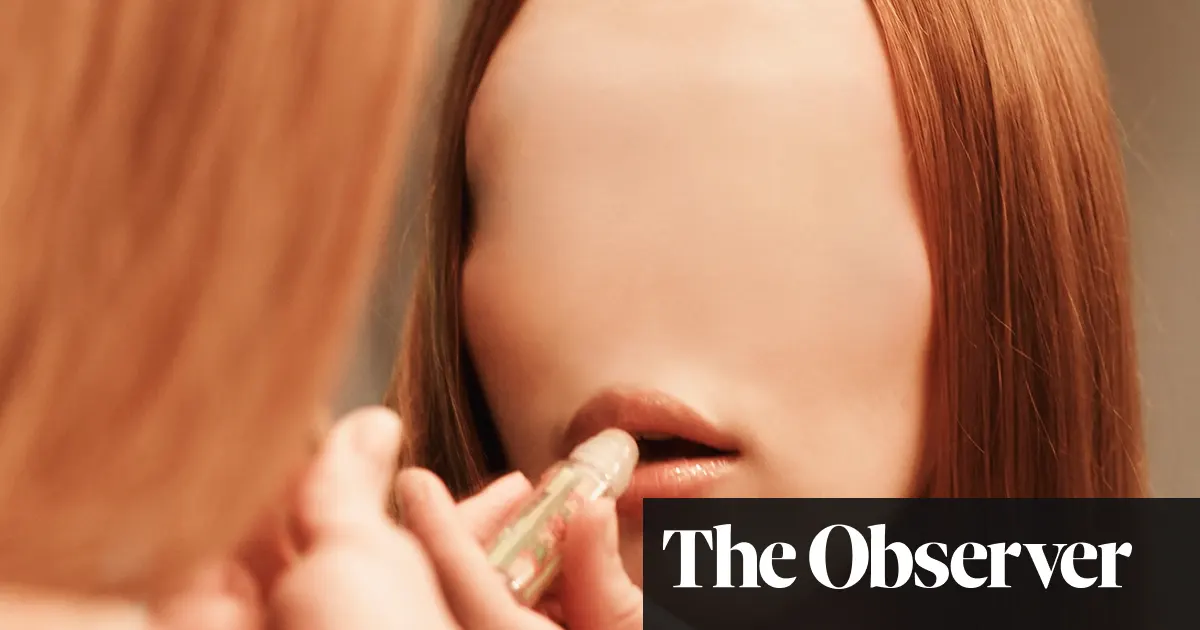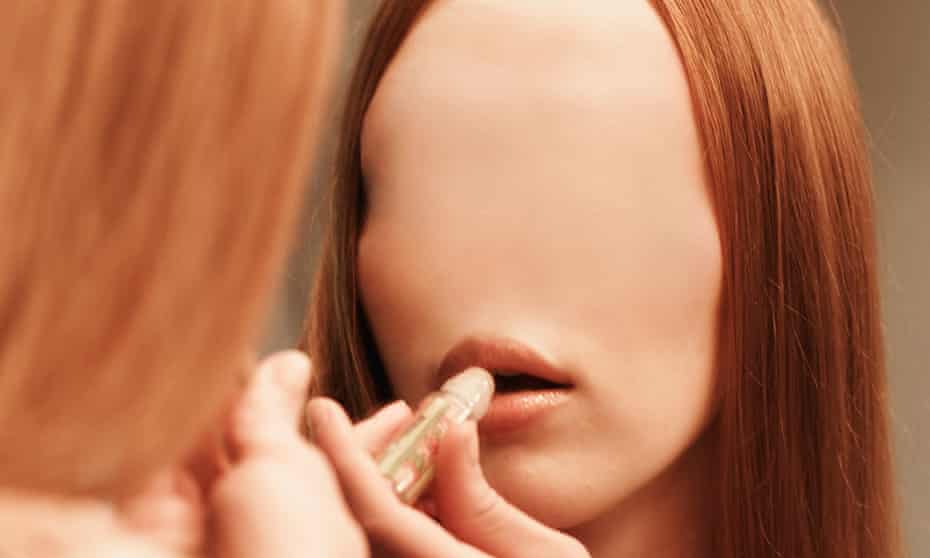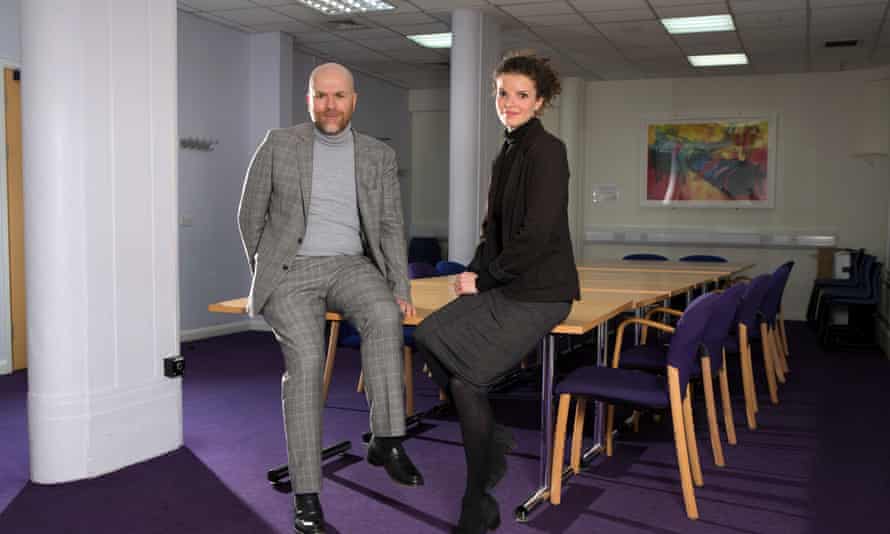
The ugly truth about body dysmorphia
Some children see only things to hate about the way they look. Their condition can lead to depression, anxiety, self-surgery and even suicide

Aman took a razor blade and very carefully cut open his nose lengthways. His aim was to remove the cartilage and replace it with that of a chicken. Finally, he thought, he’d feel so much better. In America a man took a hammer to his face. Somebody cut the ends of their fingers off. Across the world people are standing in bathrooms with knives, quietly hating themselves. Self-surgery is one of the hallmarks of body dysmorphic disorder (BDD), where a person has a distorted view of how they look. A nose, a hand. A place to focus on, and to hate.
Most of us care about our appearance. Walking to work, reflective surfaces distract us. We make small adjustments, conceal, straighten. We like to be seen from particular angles, and profess to hate our arms. But it is the point at which these concerns become an obsession – when the worry interferes with a person’s life, when they can’t leave the house because they’re stuck looking in the mirror, when relationships fail and work falters, that’s when it becomes a disorder. And that’s when the Maudsley hospital gets involved.
The Maudsley, in London, is the world’s oldest psychiatric institution. Today this imposing red-brick building on a shallow hill is surrounded by smaller units – they take up a city block alongside a railway line – and it’s in one of these squat buildings at the back that I wait for doctors Laura Bowyer and Bruce Clark. The walls of the Michael Rutter Centre for Children and Adolescents (named after the “father of child psychology”) are lime green and heavy with leaflets – family therapy, bulimia, missing people – and parents sit with their children, and the children sit with their phones.
This is the only clinic in the country to treat BDD in the young; they recently became the first in the world to publish a randomised control trial of cognitive behavioural therapy (CBT) or body dysmorphic disorder in children and adolescents. Studies on adults, while still fairly scarce, are more common. While their trial on treating adolescents was taking place, researchers in Sweden were conducting the largest study of body dysmorphic patients yet, finding that they could benefit from courses of CBT sessions online. Both studies agree that CBT works – all agree they have a cure. The problem now is finding the patients.
BDD is fairly common – it’s estimated that up to one in 50 people are suffering to varying degrees. “Another way to think about it,” says Clark, “is that if you look around a double-decker bus, it’s likely there’s somebody with BDD travelling in the same direction.”
The Body Dysmorphic Disorder Foundation lists a number of famous people who may have had BDD, including Andy Warhol, Franz Kafka, Sylvia Plath and Michael Jackson, his face, after multiple surgeries, an Edvard Munch-ish scream. It’s estimated that up to 20% of people who receive cosmetic surgery have it. In 2001 a survey of plastic surgeons in the US found that 84% said they’d operated on a patient who they came to realise had BDD, and of them, the majority said they had a poor outcome – the patient wasn’t satisfied. There are recorded cases of surgeons murdered by patients who had BDD.
But comparatively little has been published about the disorder, and even less about the disorder in young people. Very few sufferers declare their symptoms, and not all psychiatrists (let alone GPs) are trained to spot them. More commonly, the practitioners who see people with BDD first are cosmetic surgeons. Patients rarely believe they’re mentally ill – they just believe they’re ugly.
Zoe, 19, has the cheeky beauty of a Disney star. After Laura Bowyer introduces us, as her mother and I settle into NHS sofas, as she begins to describe her life, I find my eyes drifting across her face in search of the feature she so hates. I’m at a loss – she is symmetrical, she is clear-skinned, she is… “beautiful”. Zoe was 13 when a classmate first called her ugly. She began, she says, “scrutinising myself, trying to improve myself, to avoid being ridiculed at school”. But there were limits to what she could improve. “The verbal abuse was specific to being a black woman. They talked about my ‘disgusting hair’, things like that. These are things I can’t change.” At 14 she was diagnosed with anorexia, and with treatment started getting better, then worse. Anorexia and BDD, while related, are quite distinct. Most people with BDD aren’t preoccupied with their weight; instead they most commonly focus on their skin, hair or nose (in that order). And while anorexia is most commonly seen in women, the demographics for BDD are not only evenly distributed across gender lines but across the world. Every language, I’m reminded, has a word for ‘ugly’.
When Zoe moved school for her A-levels, she presented her mother with a typed list of the surgeries she required. Liposuction, fat transfers, ear pinning, a chin alteration, knee surgery. “She was quite aggressive,” her mother says quietly. “She would throw things. It was a dark time.” She looks down at her hands, where her knuckles are white from gripping. When Zoe was referred to Bowyer with BDD she was 17 and hadn’t left the house for three months. Zoe hid her face with a headscarf, and had used acid solutions bought online to bleach her skin. “I felt trapped in my body,” Zoe says. “I felt like my skin was crawling. I itched. I never felt clean. I spent hours looking in the mirror, and after a while my face would shift.” At home she broke the mirrors. “I’d type into Google: ‘Are my friends lying?’” On the anorexia forums she would find validation. “People would agree – they’d say I was right, that I was ugly, that I was fat.” At her worst, after three hours online, and four in front of the mirror, “I didn’t want to live. Because I knew nobody would ever love me.”

Bruce Clark is clinical director of Child and Adolescent Mental Health Services (CAMHS) in the UK, and a consultant child psychiatrist. As I climb the stairs to his office with Laura Bowyer, a young woman runs across the corridor, screaming. I pause as her carer gently guides her through a door. Despite the internal chaos he must deal with daily, Clark is calm and jolly – his office upstairs is welcoming, if galley-like. With three of us seated, there is not room to open the door.
Before we met, he recommended I read the work of Dr Katharine A Phillips. A professor of psychiatry at Brown Medical School, she’s the best-known authority on BDD and author of The Broken Mirror, a book that draws on her evaluations of 900 people with BDD. She revised the book in 2005. I emailed her to ask if there was anything important she’d learned since then.
“Perhaps the newest information,” she told me, “is on visual processing in BDD. This exciting work suggests that people with BDD have abnormalities in visual processing, in that they tend to overfocus on tiny details of a visual stimulus and are less able to see the ‘big picture’ than people without BDD.” When they look in the mirror, they’re seeing something different. She describes people who pick at unnoticeable marks on their skin until they have scars, people who run through the traffic when they think someone is staring at them. While Clark and Bowyer admit they’re still far from knowing the cause, they agree with Phillips’s tracing back of problems to a combination of genetic, emotional and neurobiological foundations, explaining that while childhood trauma (and indeed media pressure) can trigger it, it’s likely that “the genes a person is born with provide an essential foundation for BDD to develop,” noting that in about 20% of cases another member of the family also has the disorder.
Clark became passionate about BDD in part because, he realised, it was so hidden. “Yet the morbidity is so high. Half the people with this disorder will be hospitalised,” he says, “and around a quarter take their own life. It’s a grim picture.”
The young people they treated were in trouble. They were threatening their parents and truanting school, they were stealing money for treatments they thought would fix their faces. “Today,” says Clark, “there’s this ease of access to the idea of surgery. The advertising images for cosmetic surgery are the same as those for a spa. You can clearly see the path, from the spa, to Botox, to a nose job. It’s just another shop.”
One of the things Clark was most shocked by was the role of the internet in these young people’s disorders. Like Zoe, patients had posted photos online, asking for reassurance that they were as disfigured as they believed. And in the comments below, cosmetic surgeons had responded. Clark found the website one of his patients had described. “American clinics were advertising the procedures they’d suggest, to a child. And she read it as evidence that she didn’t have BDD, because she thought they were agreeing she was ugly.”
There is a Reddit page called “Am I ugly?” At first glance it’s the place where tact has come to die. “So there’s this thing that bothers me…” writes a 21-year-old man, alongside a selection of selfies. “It’s shadows. Shadows and lighting. How do I know if I’m ugly or not in a world that constantly changes shadows and lighting? I back up a bit, and suddenly become a monster with saggy skin.”
I saw no cosmetic surgeons advertising their services here – typically commenters suggest users improve their appearance by smiling more or cutting their hair – but I did see the occasional post from a young person acknowledging they have BDD. One man, Joonas Broodin, who has suffered from BDD since he was 12, told Vice he frequents the page for support. After he posted a photo, a user agreed that his brow and nose looked “heavy”. Broodin welcomed the comment. “I’m grateful to hear people point out some of the details I’ve been obsessing over for nearly 18 years,” he said. “In the past if I pointed out the things I obsess about and people told me: ‘No, I don’t see it, you’re fine,’ it made me feel more crazy and lied to… I only see details,” he realised, “while others see a person. ”
At the Maudsley they’re focusing on two things. Identifying BDD in children, and then treating it. They’re working to adapt traditional CBT techniques, and helping GPs and cosmetic surgeons understand what to look for.
Talking to Clark and Bowyer, I sense their frustration. Finally there is a recognised successful treatment for this common yet sometimes fatal illness, one that if it’s dealt with in adolescence might prevent years of pain and thousands of deaths, and yet the patients aren’t being diagnosed. Which is remarkable if only because screening requires no brain scans, no blood tests. In fact, Clark says, it hangs on four questions. “Are you very concerned about the appearance of some parts of your body that you consider particularly unattractive?” That’s number one. “Is your main concern with your appearance that you aren’t thin enough or that you might become too fat?” Two. “What effect has your preoccupation with your appearance had on your life?” Three.
It was around this point in the questionnaire that a doctor who’d trained at Clark’s clinic, when interviewing a patient who had attempted suicide, discovered she was distraught about the appearance of her labia. She had never discussed it with anybody before. She was successfully treated by Bowyer. Four. “How much time do you spend thinking about your defects per day?”
It is difficult to sit in a room with a young woman as she calmly lists the ways she detests herself. Zoe’s mother, a librarian who vibrates with strength, brought her up alone. She gave her Margaret Atwood books she thought Zoe might connect with “when I could no longer reach her”. She describes the guilt she felt, and the anger, and the times when she felt like “giving up”.
But today, as long as Zoe sticks to her medication and uses “the tools I’ve been given”, including “feminism, which gave me confidence”, and CBT, Zoe can see a future. She wants to be a designer. “But selling only things that won’t make people feel insecure.” She giggles: “Is that possible?” Her mum puts her hand on Zoe’s knee, and waits just a moment too long before saying yes.
For information on BDD in young people, call the BDD and Related Disorders Service at the Maudsley (020 3228 5222) https://www.theguardian.com/lifeandstyle/2016/mar/06/the-ugly-truth-about-body-dysmorphia
